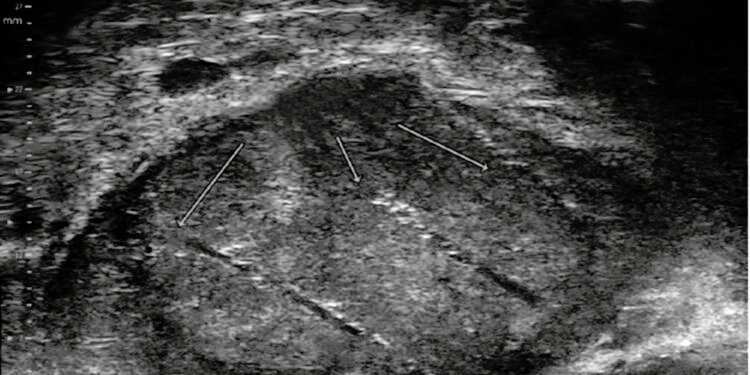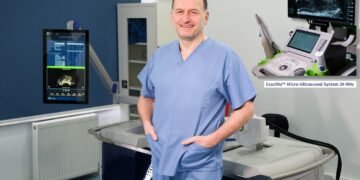As you may know, prostate cancer is a disease that often progresses asymptomatically, which is why early detection is crucial. In addition to determining PSA levels in the blood for precise and effective diagnosis of prostate cancer via micro-ultrasound screening, the use of other modern research methods is necessary. This includes prostate micro-ultrasound and, when needed, targeted biopsy under the guidance of micro-ultrasound.
What is Micro-Ultrasound?
Micro-ultrasound is the latest technology used for detecting prostate cancer. Early diagnosis of prostate cancer is a significant global challenge, and it is precisely for this reason that the micro-ultrasound device was developed.
The difference between micro-ultrasound and traditional echographic research lies in the use of high-frequency sound waves at 29 MHz (instead of 5-10 MHz). As a result, it provides 300% more accurate and sharper images at the cellular level of tissue. It can detect even suspicious areas of tumors as small as the size of a hair strand.
The procedure is brief and has several advantages compared to MRI:
- The procedure is quick, and the patient can receive the results the same day.
- No special preparation is required for the patient.
- There are no contraindications related to factors like obesity, claustrophobia, or the presence of implants in the body.
- It is financially more cost-effective.
What is Prostate Transrectal and Transperineal Biopsy under Micro-Ultrasound Guidance?
Prostate transrectal and transperineal targeted biopsy are considered minor procedures in urology. During the procedure, a special probe is placed in the rectum to visualize the prostate, detect suspicious areas of tumors, and take a biopsy from them. The procedure is brief (about 10 minutes) and is performed in an outpatient setting with only light anesthesia using a lidocaine solution. Transperineal biopsy (performed through the perineum) is done in a hospital setting under light anesthesia, and the patient can leave the clinic on the same day.
Advantages of Transperineal Biopsy:
- Lower risk of infection.
- It is performed for larger prostate volumes.
- The perineal approach allows access to any part of the prostate.
Micro-ultrasound-guided prostate biopsy effectively detects suspicious areas of prostate cancer and almost 100% accurately targets the tissue from the suspicious area. Its effectiveness is supported by scientific research.
However, the effectiveness does not end there. FUSION biopsy can also be performed. This method represents the pinnacle of prostate biopsy and is the latest achievement in modern medicine. If the patient has had an MRI scan, the procedure can combine the MRI image with the micro-ultrasound image in “live” mode for the most accurate detection, allowing tissue samples to be taken from the suspicious area.









